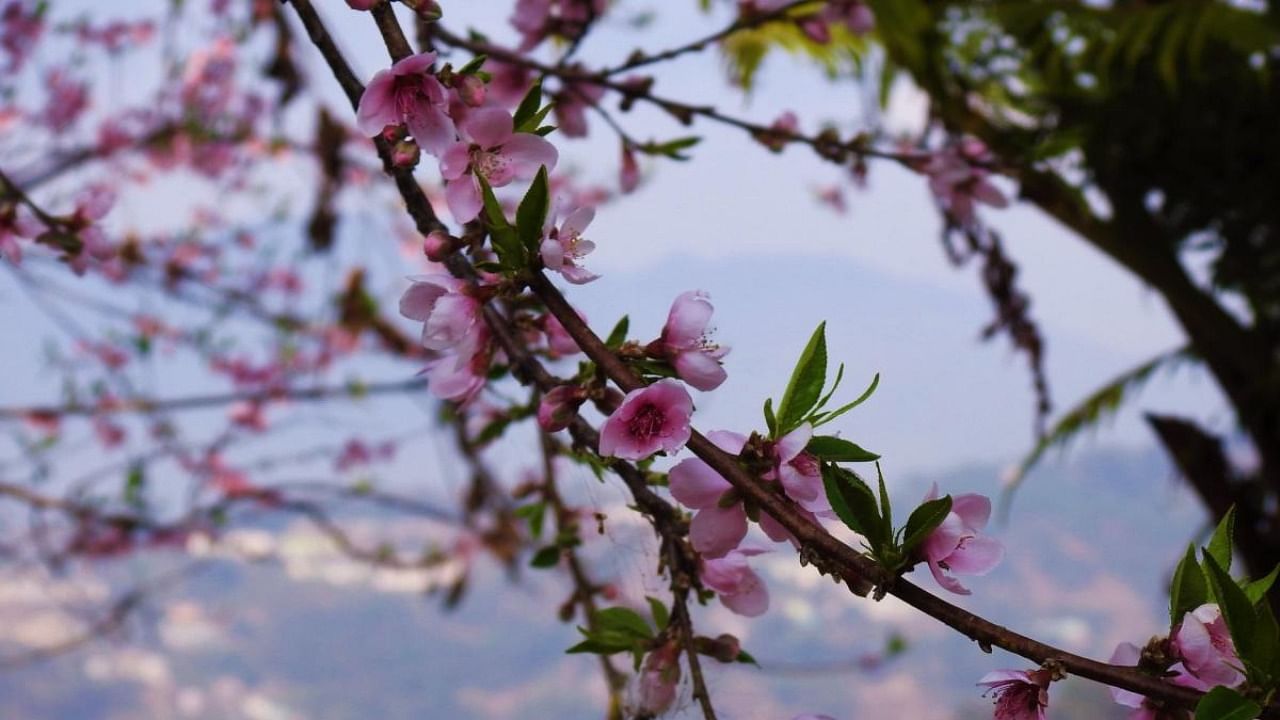

I had only seen cherry blossoms in Japanese and Korean movies and heard of their symbolism in poetry. I found them precious, beautiful and foreign. As a botanist, I try to steer away from comparing the beauty of flowers. Cherry blossoms, however, made me helplessly fall for them back in 2018, when I witnessed them for the first time. No, I didn’t make an overseas trip to Korea or Japan; I found my very own cherry blossom paradise in the small Himalayan state of Sikkim.
In the first week of November 2018, as I was travelling from Gangtok to Mangan in North Sikkim, I saw lines of cherry blossoms; their luscious pink petals were a stark contrast to the clear blue skies, turning the landscape into Japanese fairy-tale.
My nine companions were half asleep inside the cramped jeep during this early morning journey, and I had no one to pinch me back to reality! The curious thing was, I had taken the same road just a week ago and there had been no pink blossoms in sight, nor had anyone told me that cherry blossoms bloom in Northeast India.
A fragrant history
If we peruse the available literature, cherry blossoms have been a documented botanical jewel of Sikkim since the early 1900s. Their native range lies in Khangchendzonga National Park in North Sikkim. Scientifically, cherry blossoms belong to the genus Prunus in the Rosaceae family. The Japanese Sakura is Prunus serrulata, which is different from the species widely found in Sikkim, Prunus carmesina.
The cherry blossom species that flowers in April, commonly known as the Geyzing cherry, is a different species of Prunus campanulata. The white cherry that I spotted is Centenary Cherry.
The Japanese Sakura also finds its place in Sikkimese history as “Sakura,” and was first introduced during the coronation of Sikkim’s last king Chogyal Palden Thondup Namgyal. I was pleasantly and thoroughly surprised to learn about the rich history behind this unexpected floral finding.
Aesthetic pleasure
In the following months in Sikkim, my encounters with cherry blossoms became more frequent. I saw them adorning the courtyards of local villagers, tucked in the most remote villages, and every house had cherry blossoms and Rhododendron placed like precious jewels at the entrance.
Rhododendron finds utility in its medicinal properties and makes a fine wine as well, which is largely famous in Sikkim. Cherry blossoms, called “Paiyun” in Nepali, on the other hand, are mostly for aesthetic pleasure, as the fruits are edible but bitter.
The blooming season in 2018 lasted for two weeks. I was greeted once again by the cherry blossoms in early January and in early March, but only in high elevations of North Sikkim. In March 2020, I found two lonely cherry blossom trees in the Darjeeling district of West Bengal, another surprising discovery.
Recently, an early bloom of “Sakura” in Japan and the United states has left a bittersweet feeling among its admirers. I wonder, how our own cherry blossoms are doing in their abode beneath the snow-capped mountains. The state of Sikkim has witnessed warmer temperatures and increased precipitation in recent years. Cherry blossoms are sensitive to any seasonal and temperature shifts in their habitat, and hence are important indicators of the same.
This florist and cultural commonality with Japan, China and Korea speaks much about our intertwined history with East Asia, as well as the importance of Himalayan biodiversity for a better understanding of culture, history, climate change and, of course, aesthetics!